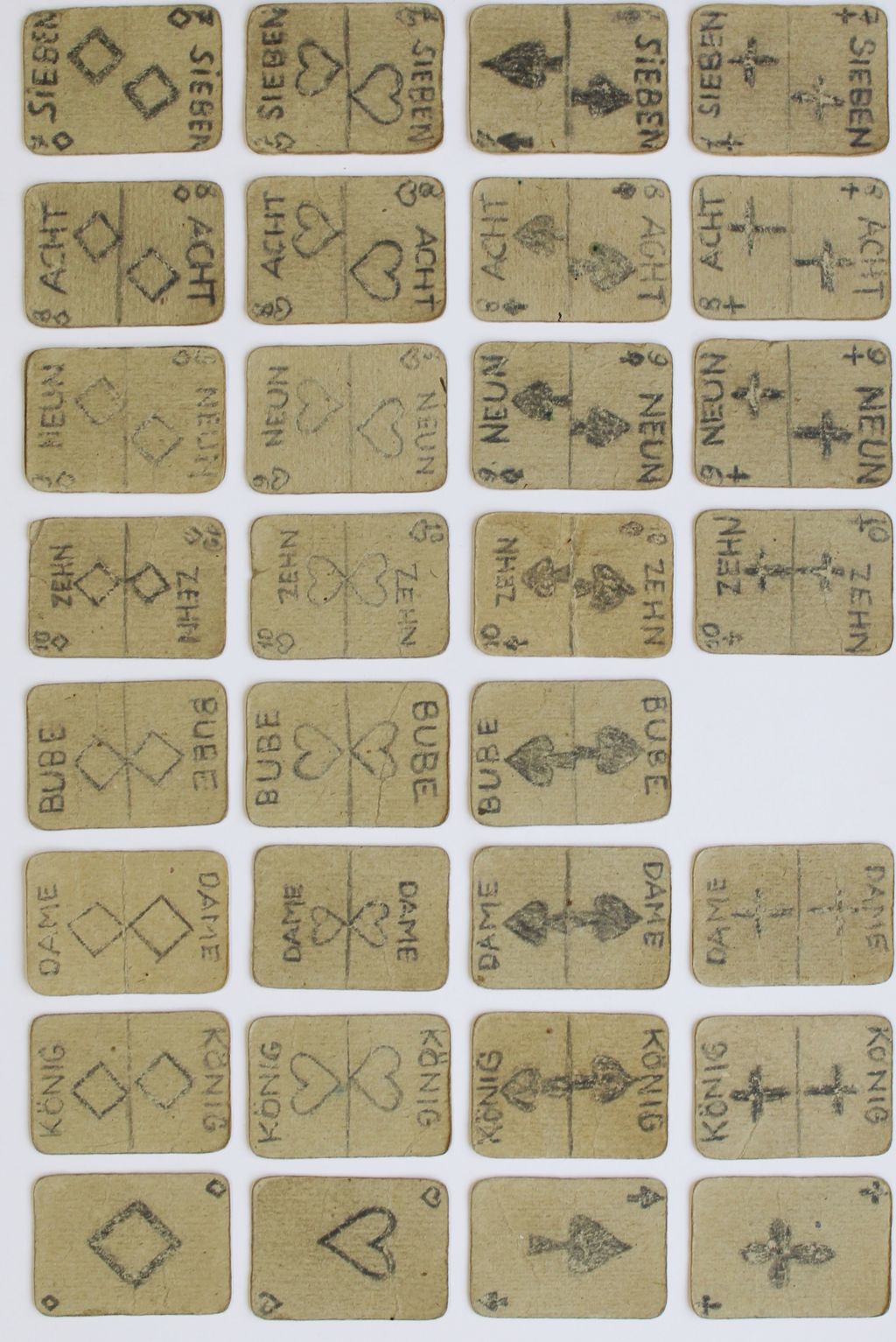The miniature card game is a cardboard skat deck made in the concentration camp. It consists of eight cards each with the symbols cross, spade, heart and diamonds drawn in pencil. Its owner was the former prisoner Gustav Buttgereit.
Gustav Buttgereit, born 1907 in Oberscherninken in East Prussia, was a German communist. Since 1931, the trained bricklayer was head of organization in the Communist Party of Germany (KPD), and since 1933 he had been illegally active in Berlin-Mitte and Berlin-Prenzlauer Berg. In 1936 he was arrested and sentenced to six years in prison for “preparation for high treason”.
After years of imprisonment in Brandenburg Prison and the Aschendorfer Moor, the Gestapo transferred him to Sachsenhausen concentration camp in 1942. He worked first in the construction detachment, from Christmas 1942 as a prisoner nurse, first in the infirmary of the main camp, and from April 1943 in the infirmary of the Falkensee subcamp. Buttgereit belonged to the camp’s illegal resistance organization.
In the GDR, Buttgereit worked in various companies as a cadre leader. From 1970 he was a member of the “Committee of Anti-Fascist Resistance Fighters” and was active in the National Memorial Sachsenhausen and the Falkensee Memorial.
Gustav Buttgereit gave the Skatblatt to his friend, the historian Dr. Günter Wehner. In 2019 Wehner handed over the card game as a donation to Sachsenhausen Memorial.
Card game, Sachsenhausen Memorial Collection, inventory no. 19.00010

